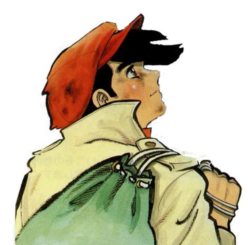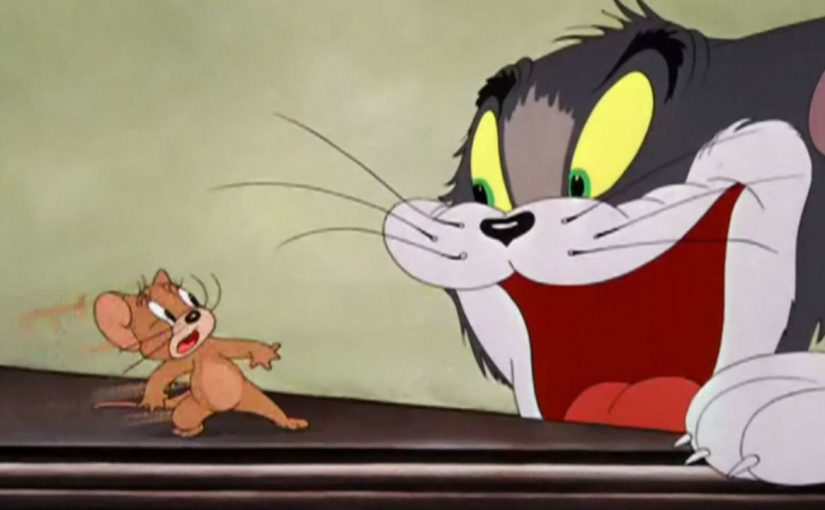Yesterday’s Joe is back, sharing some of his favourite cartoons from the Golden Age of Animation. This post will discuss Metro-Goldwyn-Mayer animation studio, and will mostly feature Tom and Jerry cartoon, post-Snow-White: from 1937-1949. As always, lots of videos, pictures and alot of attempts at being funny.
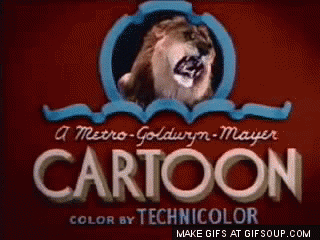
Metro-Goldwyn-Mayer ’s Tom and Jerry
Metro-Goldwyn-Mayer started distributing cartoons in 1930. They hired Ub Iwerks who produced a series with Flip the Frog (who?).
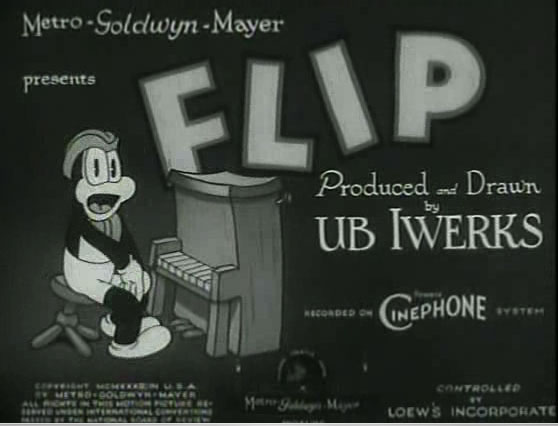
As I’m sure most of you don’t remember who Flip the Frog is, let’s safely assume these cartoons paled in comparison to Disney’s and couldn’t compete commercially. After Ub Iwerks’ run as producer, Metro-Goldwyn-Mayer hired Hugh Harman and Rudolf Ising (who were fired at Schlesinger over budget concerns) to produce the Happy Harmonies. They attempted to rival Disney, but regularly went over budget to do so, and were fired again, only to come back in 1939. Visually some of these cartoons are much more adventurous than anything Disney ever made. In fact, they almost make me feel guilty for giving Disney so much credit in earlier posts. An unsuccessful series The Captain and the Kids ran from 1938-1939, directed by William Hanna and Friz Freleng, among others. The animation was promising and actually easily surpassed anything by WB. The gags are funny, but the characters didn’t really stick. Check out Poultry Pirates, 1938, A Day at the Beach, 1938, Old Smokey, 1938 and Mama’s New Hat, 1939.
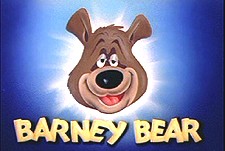
The duo Harman-Ising created the studio’s first successful character, Barney Bear, in 1939. Metro-Goldwyn-Mayer’s biggest hit however, was with cat-and-mouse duo Tom and Jerry, created in 1940 by director William Hanna and storyman Joseph Barbera. From this point, MGM was able to compete with Disney, both in commercial and critical response. One sidenote: they were frequent perpetrators of racial stereotyping. It’s suggested that she was a stereotypical black housekeep and in the 90’s, the cartoons were censored to remove her potentially offensive dialect. In a later cartoon though, it’s suggested she’s the owner of the house. On the positive side, she was the second prominent black character of the Metro-Goldwyn-Mayer cartoon studio, following Bosko and was voiced by well-known actress Lillian Randolph.
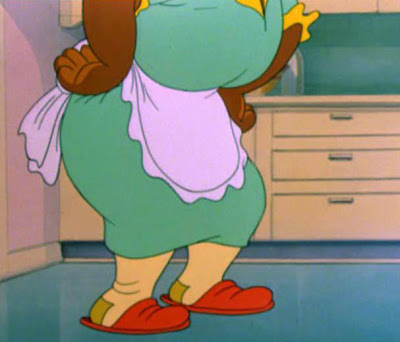
I think that’s enough reading material, let’s start watching things.
Art Gallery, 1939
Visually spectacular. A kind of advanced Silly Symphony. Sorry for the German dub. Other example of visual adventurousness are The Bookworm, 1939 and The Blue Danube, 1939.
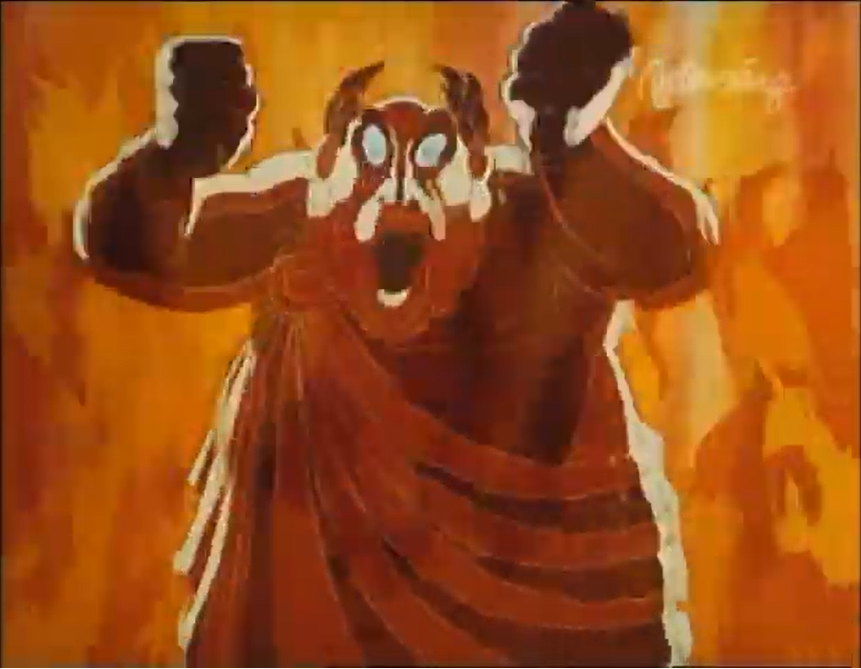
A lot of these shots are quite lovely to look at, I’m not even paying much attention to the action.
Peace on Earth, 1939
Hugh Harman’s masterpiece. Nominated for a motherf*cking Nobel Peace Prize. Not officially listed, though. But people said so.
Tom and Jerry 1: Puss Gets the Boot, 1940
What you’ve all been waiting for. The first Tom and Jerry! You start off rooting for the mouse, but at the end you feel bad for the cat. Skillfull storytelling and top notch animation.
Romeo in Rhythm, 1940
MGM cartoons from this era are hard to find, but the animation is exceptional. And check out the decor. Those dented garbage cans, crooked window panes and balconies, could have been pulled straight from a late 90’s Cartoon Network show.
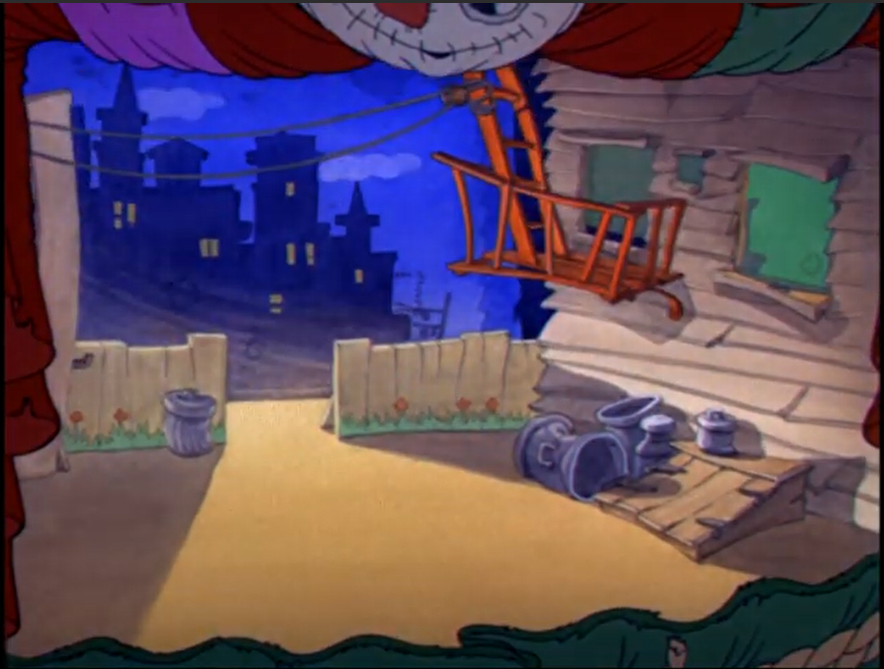
Tom and Jerry 2: The Midnight Snack, 1941
The quality of animation in this series is rising exponentially. This is a good one to compare to Looney Tunes cartoons from the same year. Characters aren’t just walking left and right over a set background. They interact with their surroundings and do loads of intricate movements.
Tom and Jerry 3: The Night Before Christmas, 1942
The cat tries to save the mouse. Sparkly, christmassy backgrounds for all you sparkle lovers. Honestly I would recommend every single Tom and Jerry. Every frame looks like a painting. And the animation by Hanna and Barbera is masterful at every single moment.
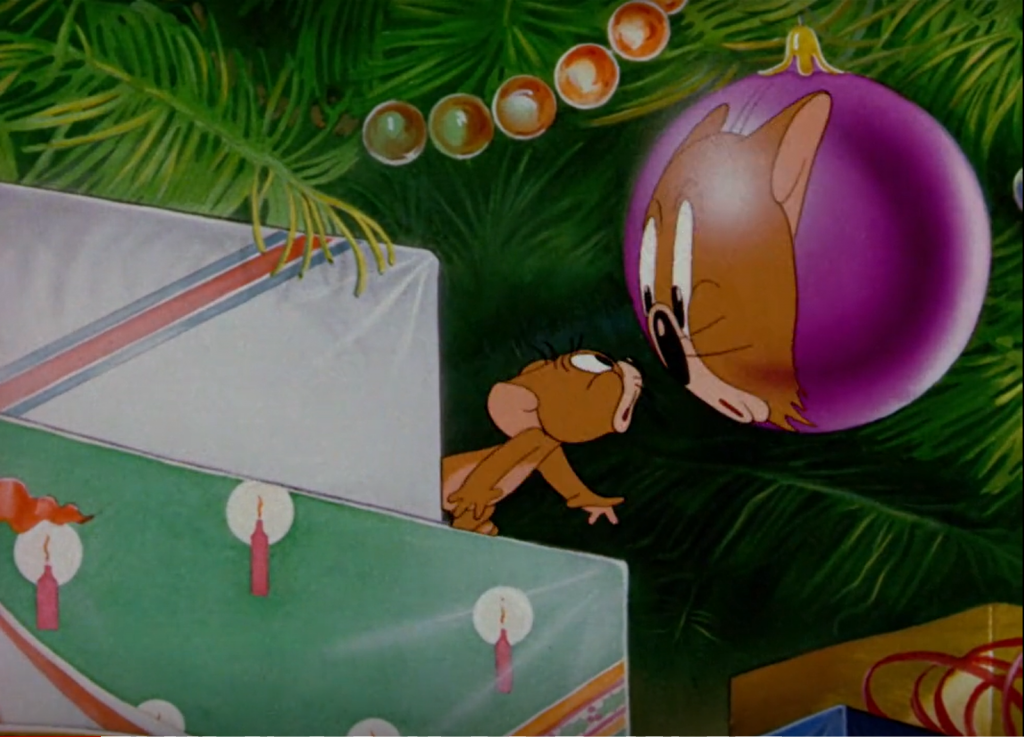
Blitz Wolf, 1942
First Tex Avery cartoon for MGM. He replaced Harman in 1941. Here you get an idea what the Looney tunes and Merrie Melodies could have been with a slightly bigger budget.
Droopy – Dumb Hounded, 1943
Avery introduced some new characters, like Droopy. Somehow he seems a lesser kind of droopy now.
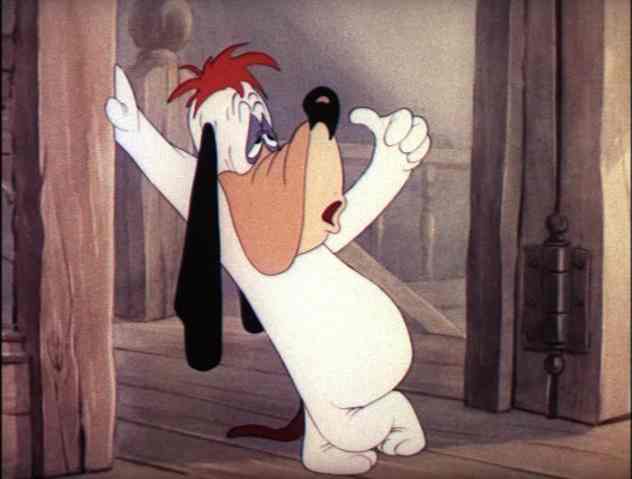
Red – Red Hot Riding Hood, 1943
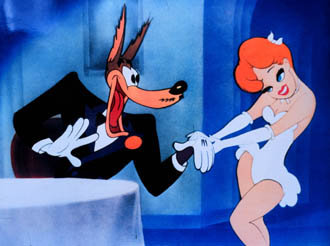
And Red filled the Betty Boop shaped hole in the animation world. Wolfie’s lustful reaction to her is one of the most popular moments in cartoon history. He goes at it again in later cartoons, check out this part of The Shooting of Dan McGoo, 1945.
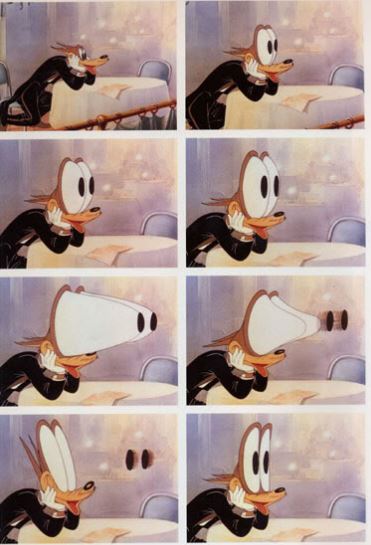
Tom and Jerry – Mouse Trouble, 1943
Academy Award winner. Good plot, Tom reads a book on how to catch a mouse and tries several approaches.
Just throwing this in here: in 1944 Avery introduced a new character called Screwy Squirrel. Yep, Screwy Squirrel. Here he is:
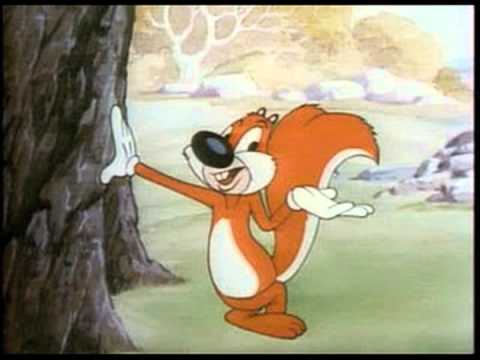
“Sure thing, boss.”
*draws normal looking squirrel*
Screwy Squirrel. Somehow I would’ve imagined him a bit more… screwy?
Tom and Jerry – Quiet Please, 1945
The one where Jerry tries to wake up the dog. Tom solves it by feeding the dog roofies. Innocent childhood memories were made.
Droopy – Northwest Hounded Police, 1946
An omnipresent Droopy keeps scaring the crap out of the Wolf. Get a load of these faces.
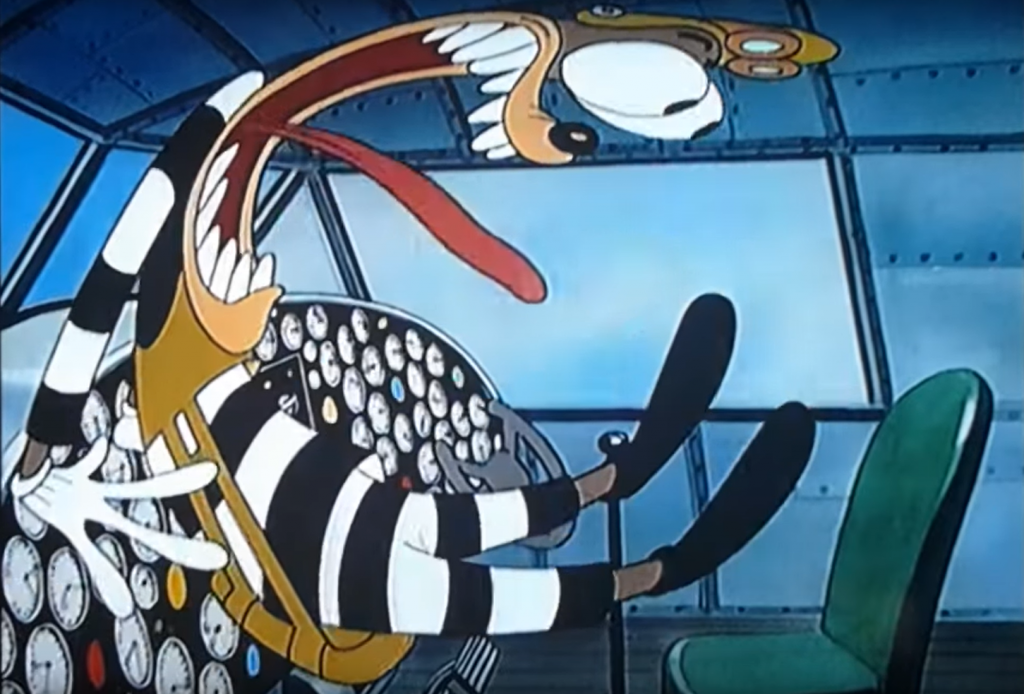
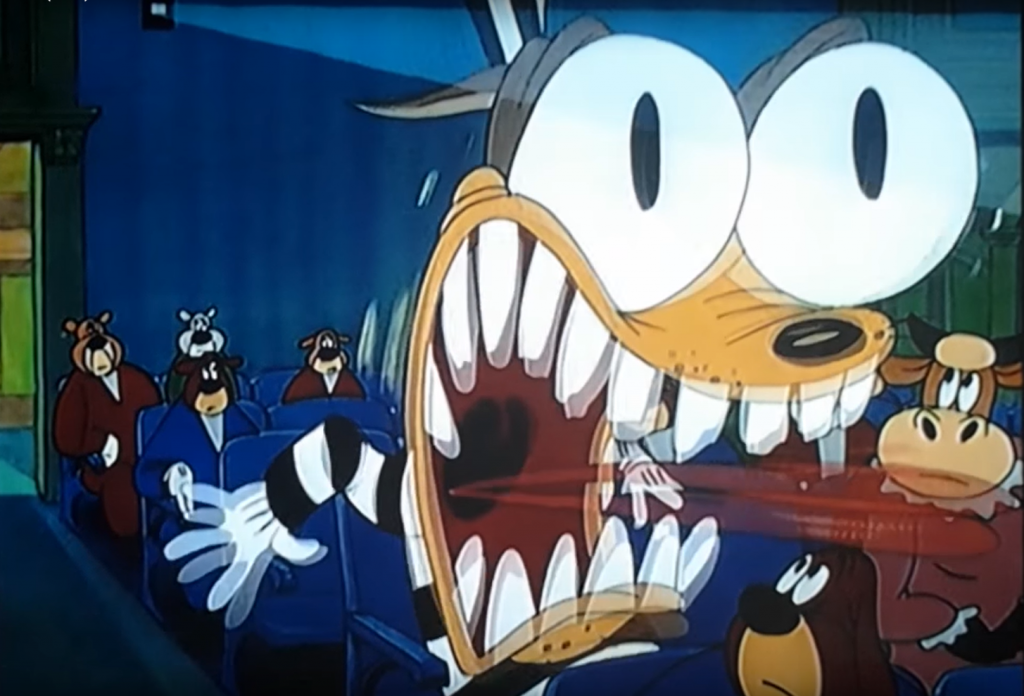
Tom and Jerry – The Cat Concerto, 1947
Ever since Walt Disney made Mickey play the piano in a cartoon, this has been emulated numerous times by other animators. Never quite as realistically as here though. As a musician myself, I adore how they used the quirks of the piece as inspiration for gags. The best interplay between music and action in a cartoon I’ve seen so far. And yes I’m counting Fantasia. Oddly enough, there was a Warner Bros’ cartoon. featuring Bugs Bunny playing the same piece, a mouse living in the piano and identical gags. Both studios have accused each other of plagiarism. It is still unclear what happened, Rhapsody Rabbit has an earlier release date but MGM’s cartoon took longer to make. I saw this one first, so…
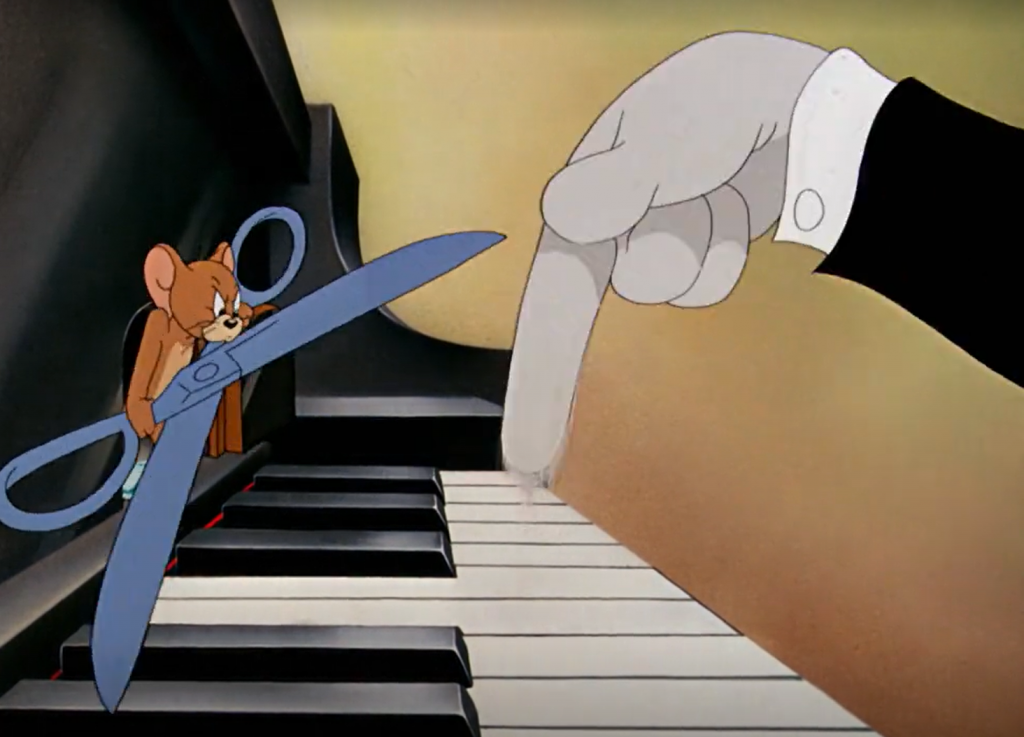
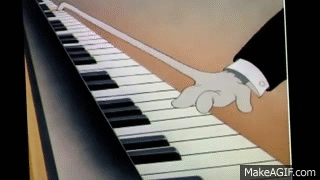
Tom and Jerry – The Truce Hurts, 1948
Unlike the title suggests, the truce between Tom, Jerry and the dog actually works pretty well, until they fight over how to divide a steak.
The Cat that Hated People, 1948
Can only find a snippet, but looks like a really fun, wacky and gratuitously violent Tex Avery cartoon.
And that’s it! Fortunately for my schedule Metro-Goldwyn-Mayer valued quality over quantity.
Next up: Fleischer / Famous Studios’ Cartoons 1937-1949 – Golden Age of Animation
Early stages of animation: 1920-1937 – The rise of cartoons
Disney’s Snow White and the Seven Dwarves (1937) – Golden Age of Animation
Disney’s Pinocchio (1940) – Golden Age of Animation
Disney’s Fantasia (1940) – Golden Age of Animation
Disney’s Dumbo (1941) vs. Bambi (1942) – Golden Age of Animation
Disney Cartoons 1937-1949 – Golden Age of Animation
Warner Bros’ Cartoons 1937-1949 – Golden Age of Animation
